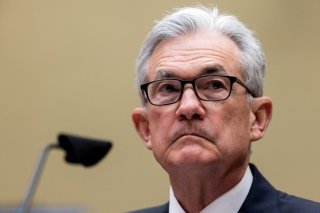Household Debt Surges as More Americans Live Paycheck-to-Paycheck
More Americans are piling up massive amounts of credit card debt as they struggle to keep up with high living costs.
There’s no question that the financial security of millions of Americans has taken a major hit due to the current high-inflationary environment, which has reached a forty-year high of 9-plus percent.
In fact, per CNBC, a new report released by PYMNTS has revealed that as of June, 61 percent of Americans—or about 157 million adults—are living paycheck to paycheck. That figure is up from 58 percent that was registered in May and 55 percent compared to a year ago.
Even top earners are not shielded from the ongoing sting of inflation. The report found that of those individuals earning $200,000 or more, 36 percent reported living paycheck to paycheck. A separate recent survey conducted by the consulting firm Willis Towers Watson discovered that 36 percent of U.S. workers with annual salaries of at least six figures are living paycheck to paycheck—up twofold compared to 2019. Of those who earn $50,000 to $100,000 annually, 34 percent are living paycheck to paycheck, while 52 percent are doing likewise if they have incomes of less than $50,000.
“Employees at higher pay levels aren’t immune to living paycheck to paycheck,” Mark Smrecek, the financial well-being market leader for North America at Willis Towers Watson, told the business news outlet.
Meanwhile, as reported by CNN, more Americans are piling up massive amounts of credit card debt as they struggle to keep up with high living costs.
According to new data by the New York Federal Reserve, U.S. household debt eclipsed $16 trillion for the first time ever during the second quarter. And even as borrowing costs continue to trek northward, credit card balances were found to have increased by $46 billion last quarter alone. Over the past twelve months, credit card debt has surged by $100 billion—or 13 percent—the largest increase seen in more than two decades.
“The impacts of inflation are apparent in high volumes of borrowing,” New York Fed researchers wrote in a blog post.
In an effort to tame such persistent inflationary pressures, the Federal Reserve last week raised its key short-term rate by three-quarters of a percentage point for a second straight month. The unanimously approved rate hike now puts the federal funds rate at a range of 2.25 percent to 2.5 percent, the highest level since December 2018.
In its post-meeting statement, the rate-setting Federal Open Market Committee noted that “inflation remains elevated, reflecting supply and demand imbalances related to the pandemic, higher food and energy prices, and broader price pressures.”
Fed Chair Jerome Powell left the door open regarding the central bank’s next move at the September meeting, saying that it would largely be driven by what the data shows. “As the stance of monetary policy tightens further, it likely will become appropriate to slow the pace of increases while we assess how our cumulative policy adjustments are affecting the economy and inflation,” he said.
Markets are expecting the Fed to hike aggressively through this fall and perhaps start cutting rates by next summer.
Ethen Kim Lieser is a Washington state-based Finance and Tech Editor who has held posts at Google, The Korea Herald, Lincoln Journal Star, AsianWeek, and Arirang TV. Follow or contact him on LinkedIn.
Image: Reuters.

